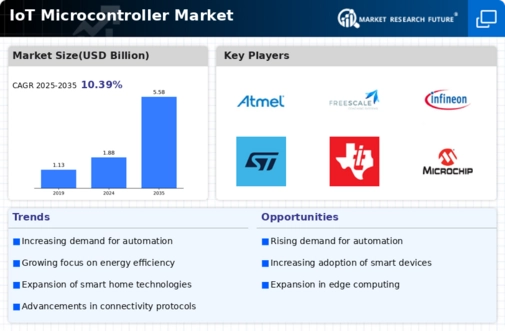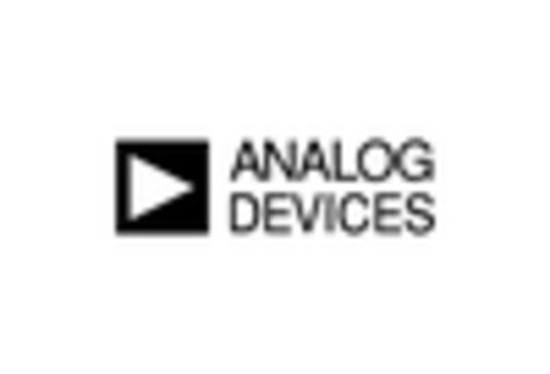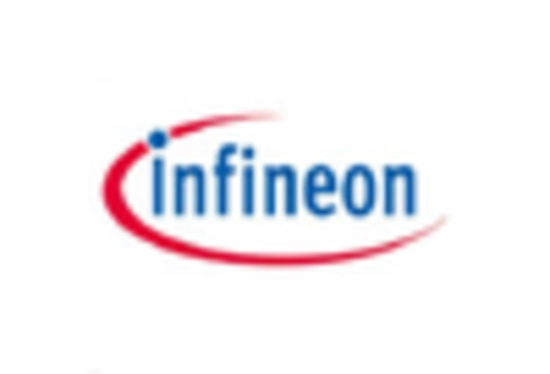Market Analysis
In-depth Analysis of IoT Microcontroller Market Industry Landscape
The growing integration of IoT technologies across several sectors is driving a revolutionary change in the market dynamics of the Internet of Things (IoT) microcontroller industry. IoT microcontrollers facilitate smooth data interchange and communication between connected devices by acting as their brains. The increase in demand for smart and connected devices in homes, businesses, and cities is a major driver of the market's growth. The growing need for microcontrollers with improved processing capabilities, reduced power consumption, and strong networking choices is a result of both businesses and consumers realizing the advantages of IoT applications. The IoT microcontroller market is characterized by a competitive environment that is driven by increasing market entry, innovation, and product variety. Both well-established semiconductor firms and up-and-coming startups are competing to create microcontrollers that are more economical and efficient in order to satisfy the wide range of demands of the growing Internet of Things ecosystem. This rivalry is pushing the limits of downsizing, energy efficiency, and security feature integration, driving improvements in chip design. Consequently, the industry is seeing a constant flow of new product introductions and partnerships meant to get a competitive advantage. A noteworthy feature of the market dynamics is the growing emphasis on security in the design of Internet of Things microcontrollers. Concerns over cybersecurity and data privacy have grown as linked devices proliferate. In response, producers are equipping their microcontrollers with strong security features including authentication procedures and encryption. In addition to being a reaction to market needs, this change also shows how important it is for the industry as a whole to establish confidence in IoT solutions. Moreover, the market for IoT microcontrollers is greatly impacted by the quick rise of IoT applications across a range of sectors. Smart homes, wearable technology, industrial automation, and healthcare are just a few of the industries that are adopting IoT microcontrollers due to their adaptability. A more specialized and segmented market landscape is the result of market participants' increased ability to customize their products to meet industry requirements as a result of this extensive integration.















Leave a Comment